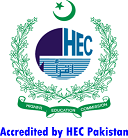RUSSIA AND CENTRAL ASIA: THE EURASIAN ORIENTATION OF DEVELOPMENT
Abstract
The famous ‘Eurasian Heartland’ roughly including the present-day Russia, the three South Caucasian and the five Central Asian states viz. Kazakhstan, Turkmenistan, Uzbekistan, Kirghizstan and Tajikistan has been a highly contested region in world politics due to geo-political, cultural and economic reasons. In the post-Cold War era it became the center of euphoric expectations for the regional as well as world powers – expectations that ranged from energy to geo-strategic balances and imbalances, and to the Fukuyama brand of ‘triumph of liberal democracy’ in the region. Shattering of those dreams reduced the region’s profile in international politics. However, recently it has again emerged with a potential of politico-economic development. From the formation of the Eurasian Economic Union (2015) to the continuing political and economic instability in the region, all in the backdrop of rise of China as an emerging world power, the rising Russian profile in Central Asia is again being discussed in policy-making circles. In this context, this paper offers an overview of the Eurasian concept(s) with particular reference to the Russo-Central Asian politics and policies that are likely to cause a profound impact on regional and international dynamics in the future. It’s chief argument is that due to Moscow’s growing interest, the historical Eurasian Heartland is likely to play a more decisive role in the coming decades.
Key Words: Eurasian Heartland, Russia, Central Asia, Eurasian Theories, Political Development, Economic Development













